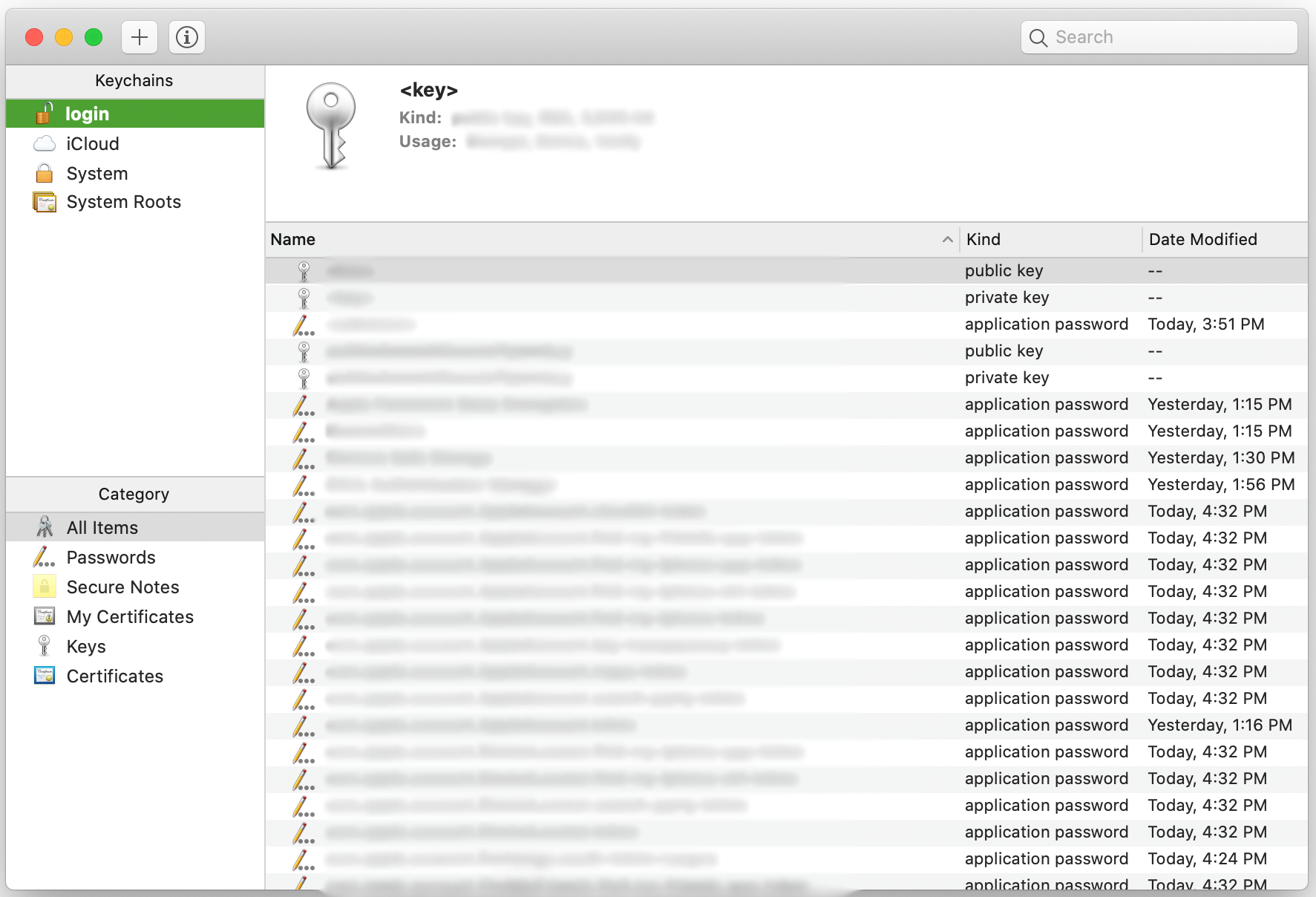

This means that you don't have to use a separate third-party password manager whenever you're on the computer. However, this doesn't mean that Windows users who own an iPhone or iPad are left out since Apple has a solution.Īpple recently released a Google Chrome extension that lets Windows users access all the stored passwords in iCloud Keychain. Use Face ID or Touch ID when prompted, or enter your passcode. In iOS 13 or earlier, select Passwords & Accounts, then tap Website & App Passwords. It all happens seamlessly as long as you're using an iOS, iPadOS, or macOS device. How do I see keychain passwords View saved passwords in Settings Tap Settings, then select Passwords. When Safari detects a website that you have a saved password for, you get the option to autofill the login details with a single tap quickly, followed by Face ID/Touch ID authentication. Related: How to Save Passwords to Your iPhone Remember those "Would you like to save this password" popups you get when you sign in to a new website? Yes, that's what we're talking about. You may have accessed this feature while logging in to apps or web pages in Safari. ICloud Keychain is Apple's own password management system that's built into the iPhone, iPad, and Mac. But, what happens when you switch to a Windows PC though? Let's find out below. If you have several Apple devices, chances are, you don't use a third-party password manager at all. This is because Apple offers an integrated solution that works seamlessly on its devices. This is exactly why password managers have become so popular in recent years.

Today, the average internet user has several online accounts which give them access to various services, social platforms, apps, and more. Manually managing all the login details for these accounts can be a nightmare sometimes.


 0 kommentar(er)
0 kommentar(er)
